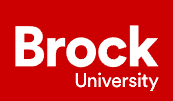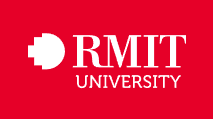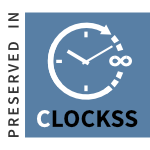Research Status of Laser Cladding crack Suppression Technology
DOI:
https://doi.org/10.63313/FE.2002Keywords:
Laser cladding, crack, suppression methodAbstract
As a new type of micro-nano additive technology, laser cladding technology melts powder through a high-power laser beam to form a metallurgically bonded molten pool on the coating surface, which can provide excellent modification functions such as enhancing hardness, wear resistance and corrosion resistance on the workpiece surface. Due to the increase in hardness, the cladding layer is prone to fracture defects. The appearance of cracks seriously affects the service life of the workpiece, poses a great safety hazard to the safe production of enterprises, and greatly limits the application of nickel-based alloy powders. Therefore, this paper summarizes the existing effective technical measures for suppressing crack generation, laying a theoretical foundation for the latter research.
References
[1] Jia L,Cui H,YangSF,et al. As cast microstructure and homogenization kinetics of a typical hard-to-deform Ni-base superalloy[J].Joumal of Materials Researeh and Technolo-gy,2023,23:5368-5381.
[2] He H,WangDS,Liang EJ,etal.Improvement onmicrostructure and cracking susceptibility of laserclad Nibased layers by in situ generation of tantalumcarbides and borides[I].Advanced MaterialsResearch,2012,472/473/474/475:239-245
[3] Zhu LD,Xue PS,Lanet al. Recent research anddevelopment status of laser cladding :a re-view [J]. Optics andLaser Technology,2021,138 :106915.
[4] Li Zhenggang, Peng Bo. Formation Mechanism and Control Measures of Cracks in Laser Cladding layer []. Materials Protection, 2016,49(11):61-66.
[5] Huang Weidong, Lin Xin. Research Progress of High-Performance Metal Parts by Laser Stereoscopic Forming [J]. China Materials Progress, 2010,29 (6):12-27,49
[6] Wang Wei, Sun Wenlei, Zhou Haonan, et al. Crack formation mechanism of nickel base al-loy laser cladding coating and the matching method research [J]. Journal of hot working process, 2022 ploidy (14) : 83-88. The DOI: 10.14158 / j.carol carroll nki. 1001-3814.20210774.
[7] Zhao Yafan, Chen Chuanzhong. Mechanism and Preventive Measures of Cracking in Laser Cladding Metal Ceramic Coatings [J]. Laser Technology, 2006(1):16-19, 22
[8] Hou Suoxia, Ren Chengxiang, Wu Chao, et al. Generation and suppression methods of Cracks in laser cladding layers [J]. Materials Review,2021,35(S1):352-356.
[9] Deng Linhui, Li Tao, Zhan Huan, et al. Laser cladding cracks formation mechanism and control method research [J]. Journal of hot working process, does 2024 (22) : 1-5 + 10. DOI: 10.14158 / j.carol carroll nki. 1001-3814.20230432.
[10] Li Xiaohui, Xie Junjie ,Li Fuqiu ,et al. Research status and pro-gress of ultra high speed laser cladding technology[ J ]. Mechanical&Electical Engineering Technology,2025,54(4):14-23.
[11] Li Huaizhi, Xia Yonghu. High speed laser cladding iron-based alloy coating cracks and pores study [J]. Journal of energy and environmental protection, 2025,47 (8) : 215-221 + 227. DOI: 10.19389 / j.carol carroll nki. 1003-0506.2025.08.031.
[12] Zhang Lei, Chen Xiaoming, Liu Wei, et al. Formation mechanism and sensitivity of cracks in laser cladding Ni-based alloys [J]. Advances in Laser & Optoelectron-ics,2019,56(11):176-183.
[13] Ye Junyang, Li Xianfen, Shen Hu, et al. Ni60 alloy laser cladding coating crack control re-search [J]. Journal of welded pipe, 2023 46-48 (12) : 28 and 33, DOI: 10.19291 / j.carol carroll nki. 1001-3938.2023.12.005.
[14] Lu Wei. Research on Cracking of Cladding Layer in High-speed Wire Rod Rolls by Laser Cladding [D]. Beijing University of Technology,2006.
[15] Yu Ting, Deng Qilin, Dong Gang, et al. The influence of tantalum on crack sensitivity and mechanical properties of laser cladding nickel-based coatings [J]. Journal of Mechanical Engineering,2011,47(22):25-30.
[16] Cui Penghe, Du Zhuangzhuang, Zhang Hao, et al. Rare earth added Y2O3 on the influence of the laser cladding layer cracking sensitivity [J]. Applied laser, 2016, 4 (3) : 239-246. The DOI: 10.14128 / j.carol carroll nki. Al. 20163603.239.
[17] Zhang Leitao. Research on the Causes and Control of Cracks in 45 Steel Laser Cladding Ni60/WC Coatings [D] Chang 'an university, 2021. DOI: 10.26976 /, dc nki. Gchau. 2021.002138.
[18] Han Bin. Research on the Influence of CeO2 on the Microstructure and Properties of Laser Cladding Fe-Based Composite Coatings on Mold Surfaces [D]. Jinan university, 2021. DOI: 10.27166 /, dc nki. GSDCC. 2021.000135.
[19] Ning F, Cong W. Microstructures and mechanical properties of Fe-Cr stainless steel parts fabricated by ultrasonic vibration-assisted laser engineered net shaping process[J]. Materi-als Letters, 2016, 179: 61-64.
[20] Zhuang D D, Du B, Zhang S H, et al. Effect and action mechanism of ultrasonic assistance on microstructure and mechanical performance of laser cladding 316L stainless steel coat-ing[J]. Surface and Coatings Technology, 2022, 433: 128122.
[21] QIK,YANG Y,SUN R,et al, Effect of magnetic field onerack control of Co-based alloy laser cladding[]]. Optics8Laser Technology,2021,141:107129.
[22] Lin Yinghua, Yuan Ying, Wang Liang, et al. The influence of electromagnetic Composite field on the microstructure and cracks of Ni60 Alloy during solidification [J]. Acta Metal-lurgica Sinica,2018,54(10):1442-1450.
[23] Liu Hongxi, Tao Xide, Zhang Xiaowei, et al. Microstructure and interface distribution mor-phology of Fe-Cr-Si-B-C coating by mechanical vibration-assisted laser cladding [J1. Optics and Precision Engineering,2015,23(8):2192-2202.
[24] Hu Guofang. Research on Microstructure and Properties of NiCrBSi Alloy Cladding Layer Assisted by Electro-Magnetic-Ultrasonic Composite Field Laser Cladding [D]. Qingdao uni-versity of science and technology, 2021. DOI: 10.27263 /, dc nki. Gqudc. 2021.000504.
[25] Shen Jingyi. Research on the Microstructure and Properties of Vibration-assisted Laser Cladding Nickel-based WC Reinforced Coatings [D]. Qingdao university of science and technology, 2019. DOI: 10.27263 /, dc nki. Gqudc. 2019.000030.
Downloads
Published
Issue
Section
License
Copyright (c) 2025 by author(s) and Erytis Publishing Limited.

This work is licensed under a Creative Commons Attribution 4.0 International License.





















